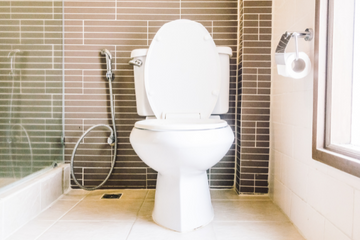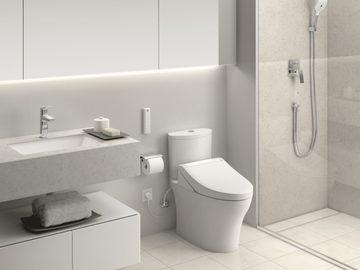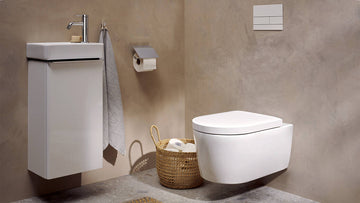In today's world, where environmental awareness is gaining momentum, finding innovative methods to conserve essential resources is more critical than ever. One area that shows considerable promise for water conservation is the bathroom, particularly through the adoption of water-saving toilet accessories. For professionals in the Industry QA sector, its vital to understand the effectiveness and implications of these accessories for compliance, sustainability, and product advancement.

Understanding Water-Saving Toilet Accessories
Water-saving toilet accessories are engineered to minimize the amount of water consumed per flush, aiding in water conservation and lowering utility bills. These accessories include dual-flush systems, retrofit kits, and even advanced sensor technologies. The main objective is to maintain or enhance toilet functionality while significantly decreasing water usage. According to the Environmental Protection Agency (EPA), toilets constitute nearly 30% of an average home's indoor water consumption. Therefore, the potential for savings with efficient models is vast. For detailed insights on the environmental merits of these technologies, consider the EPA's insights on low-flow toilets.
Types of Water-Saving Toilet Accessories
Numerous types of water-saving accessories are available, each tailored to different toilet designs and user needs. Here are some popular choices:
- Dual-flush systems: These systems provide two flush options: a full flush for solid waste and a reduced flush for liquid waste. This versatility can lead to up to 67% less water usage compared to conventional toilets. For an in-depth comparison, check out Dual vs Single Flush.
- Toilet tank banks: Simple devices that displace water in your toilet tank, thereby reducing the pressure of each flush.
- Fill cycle diverters: They optimize every flush cycle by redirecting excess water back into the tank, effectively shortening the flush.
- Sensor-operated flush valves: Typically found in commercial settings, these valves leverage infrared technology to automate flushing, ensuring ideal water usage.
The Benefits of Implementing Water-Saving Toilet Accessories
Integrating water-saving toilet accessories yields several advantages. For Industry QA professionals, key benefits include:
Environmental Impact
Reducing water consumption has a direct positive impact on the environment through conservation of freshwater sources, decreased energy expenditures for water treatment, and alleviation of pressures on water supply systems. This practice aligns with global sustainability initiatives and can significantly lower a facility's overall ecological footprint.
Cost Savings
Employing water-saving accessories is a pathway to significant reductions in water bills. For instance, a household of four can potentially save up to 16,000 gallons of water annually by upgrading to a high-efficiency toilet. Over time, these savings can offset the initial investment costs, making it an economically wise choice for both residential and commercial users.
Compliance and Certification
Many water-saving accessories comply with or surpass standards set by certification bodies like WaterSense, endorsed by the EPA. These certified products are verified to use at least 20% less water than traditional models without sacrificing performance. Attaining such credentials can enhance a businesss standing and help ensure regulatory compliance.
Challenges and Considerations
While the advantages are apparent, there are hurdles involved in implementing water-saving toilet accessories. These challenges include compatibility with existing plumbing, potential performance issues, and initial installation expenses. Comprehensive testing and quality assurance are crucial to guarantee these products meet industry standards and consumer expectations.
Compatibility Issues
Not every water-saving accessory is compatible with all toilet models. It is essential for Industry QA professionals to evaluate compatibility to prevent operational failures and ensure optimal performance. Engaging with manufacturers and utilizing resources like the Home Water Works guide can provide essential information.
Performance Concerns
Potential performance concerns such as the need for multiple flushes or reduced flushing power may arise. Thorough testing and collecting consumer feedback are vital for addressing these challenges and enhancing product designs.
Initial Costs
Despite significant long-term savings, the upfront costs associated with purchasing and installing water-saving accessories can deter some consumers. Industry QA professionals should focus on educating the public on long-term benefits and available rebates or incentives for upgrading to efficient models.
Conclusion
For Industry QA professionals, adopting water-saving toilet accessories symbolizes a significant opportunity to champion sustainable practices and product innovation. By grasping the various types, benefits, and challenges associated with these accessories, professionals can make well-informed decisions that positively impact both the environment and the financial bottom line. Additionally, you may find these conservation tips helpful for broader water-saving strategies.

FAQ
What are the most effective water-saving toilet accessories?
Dual-flush systems and sensor-operated flush valves are highly effective, offering considerable water savings along with modern convenience.
How much water can I save with these accessories?
Depending on usage and the specific accessory, users can save up to 16,000 gallons annually, leading to a notable reduction in water bills.
Are there any rebates for installing water-saving accessories?
Yes, many city and county programs offer rebates or incentives to encourage the transition to water-efficient models, aiding in offsetting initial expenses. For further exploration on smart upgrades, you can also visit this guide.






